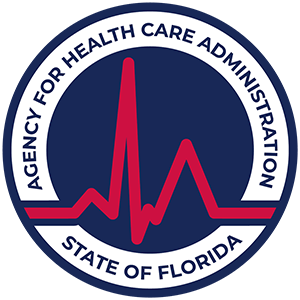Why is Mixing Prescription Drugs with Alcohol Dangerous?
Discover why mixing prescription drugs with alcohol is dangerous and how it can impact health and safety.

Understanding Drug and Alcohol Interactions
The dangers of mixing prescription medications with alcohol are significant and can vary based on the type of drug being consumed. Understanding the interactions between different classes of drugs and alcohol is crucial for safety.
Depressants and Alcohol Synergy
Depressant medications, such as Xanax and Valium, when combined with alcohol, create a synergistic effect. This combination can result in rapidly intensified effects, leading to issues such as dizziness, stumbling, loss of sphincter control, memory loss, and in severe cases, death [1]. The following table outlines the potential consequences of mixing depressants with alcohol:
EffectDescriptionDizzinessIncreased vulnerability to falls and accidentsMemory LossImpaired ability to recall events that occurred under the influenceLoss of ControlDifficulty with motor functions and decision-makingRisk of OverdoseHigher possibility of overdose leading to respiratory failure or death
Stimulants and Alcohol Masking
Stimulants, including Ritalin, Adderall, and Concerta, can mask the effects of alcohol. This masking makes it challenging for individuals to accurately gauge their level of intoxication. As a result, they may over-consume alcohol, leading to severe impairment of coordination and judgment. This can result in blackouts, passing out, and potentially death [1]. The following table summarizes the risks associated with mixing stimulants with alcohol:
RiskDescriptionImpaired JudgmentReduced awareness of intoxication levelsOver-ConsumptionIncreased likelihood of drinking larger amounts of alcoholCoordination IssuesSignificant impairment in motor skillsBlackoutsLoss of memory for events that occurred while intoxicated
Opiates and Alcohol Risks
The combination of prescription opiates, such as Vicodin, OxyContin, Tylenol 3 with codeine, and Percocet, with alcohol presents serious health risks. This mixture can cause slowed or arrested breathing, lowered pulse and blood pressure, unconsciousness, coma, and potential death [1]. The following table details the dangers of mixing opiates with alcohol:
RiskDescriptionRespiratory DepressionDecreased ability to breathe, which can lead to suffocationUnconsciousnessLoss of consciousness, increasing the risk of injuryComaState of prolonged unconsciousness requiring emergency interventionPotential for DeathHigher risk of fatal outcomes due to combined effects
Understanding these interactions is key to recognizing the dangers tied to combining prescription drugs with alcohol. Individuals must be informed about the significant risks and take caution when prescribed medications, especially if they consume alcohol. For more on the impact of prescription drug abuse, see our articles on why are prescription drugs so commonly abused? and prescription drug abuse statistics.
Legal and Safety Consequences
Understanding the legal ramifications and safety consequences of mixing prescription drugs with alcohol is crucial for public awareness. The combination can lead to significant health risks and legal issues.
Legal Ramifications
Misusing prescription medications, including combining them with alcohol, can result in serious legal repercussions. Individuals may face convictions and potential jail time due to the unlawful use or abuse of these substances University of Michigan Health Service. The law treats these actions seriously because they pose risks not only to the individual but also to public safety.
In addition to criminal charges, those caught abusing prescription drugs may face civil penalties or have professional licenses revoked, impacting their employment and future job prospects.
Preventing Adverse Events
To mitigate the dangers associated with mixing alcohol and prescription medications, raising awareness is essential. For instance, approximately 40% of adults have taken medications within the past year that could interact negatively with alcohol NIAAA.
The following table outlines some common prescription drugs and their potential interactions with alcohol:
Medication TypeAlcohol Interaction RisksPain Relievers (e.g., opioids)Increased drowsiness, risk of overdoseAntibioticsReduced effectiveness; potential liver strainAntidepressantsHeightened side effects; increased sedationAntihistaminesEnhanced drowsiness, impaired motor functionBlood ThinnersIncreased risk of gastrointestinal bleeding
Dozens of common medications can interact dangerously with alcohol, leading to harmful effects such as liver damage, gastrointestinal bleeding, and increased likelihood of traffic accidents NIAAA. Understanding these interactions can help individuals take informed steps to avoid potentially life-threatening situations.
The prevalence of alcohol and medication use in the population must also be acknowledged. According to the CDC, about two-thirds of American adults over the age of 18 consume alcohol, including 51% who are regular drinkers and 13% who drink infrequently WebMD.
By raising awareness about the risks associated with combining medications and alcohol, effective public health measures can be developed. For further information on the causes and consequences of prescription drug abuse, explore our articles on why are prescription drugs so commonly abused? and prescription opioid abuse causes.
Common Drug Categories
Understanding the different categories of medications is crucial in recognizing the dangers of mixing prescription drugs with alcohol. Many commonly used medications can interact adversely with alcohol, leading to various harmful effects.
Medication Types
Medications can be broadly categorized into several types depending on their intended use. Below is a breakdown of common medication categories and examples:
Medication TypeExamplesPain RelieversOpioids, Acetaminophen, NSAIDsAnti-anxiety MedicationsBenzodiazepines, Sedative hypnoticsAntidepressantsSSRIs, SNRIsSleep AidsZ-drugs, Barbiturates
Each type of medication may have specific interactions when combined with alcohol, which can exacerbate their effects or lead to unforeseen complications.
Medications and Alcohol
Combining alcohol with many medications can lead to interactions that change their action in the body. These interactions may cause unpleasant symptoms or life-threatening complications. According to Express Scripts, such risks are often not well-known, even if mentioned on the medication label. A staggering 40% of adults have taken a medication in the past year that could negatively interact with alcohol, highlighting the importance of awareness.
Harmful Interactions
The consequences of mixing alcohol with prescription medications can be severe. The potential risks include:
Potential RisksDescriptionGastrointestinal BleedingIncreased chance of bleeding or ulcersLiver DamageHeightened risk of liver injuryFalls and AccidentsImpaired coordination and judgmentOverdose DeathsIncreased lethality when combining depressants
Older adults are especially vulnerable to these interactions as their bodies break down alcohol more slowly, causing it to remain in their systems longer. About 80% of individuals aged 65 and older have taken medication in the past year that could interact with alcohol, making this a growing public health concern [2].
Awareness of these interactions is vital for preventing health complications. For more information on prescription drug abuse, revisit our discussions on why are prescription drugs so commonly abused? and most abused prescription drugs.
Risk Factors and Vulnerable Populations
Understanding the risks associated with mixing prescription drugs and alcohol is essential, particularly for certain populations that may be more vulnerable to harmful interactions.
Age Considerations
Older adults are at a heightened risk for adverse effects when combining alcohol with medications. This increased vulnerability arises from several factors. First, the aging process slows down the body's ability to metabolize alcohol, resulting in it remaining in the system for a longer duration. As people age, they are also more likely to be prescribed multiple medications that can have interactions with alcohol.
Statistics indicate that about 80% of individuals aged 65 and older have taken a medication in the past year that could interact negatively with alcohol [2]. This significant figure underscores the urgent need for awareness about the potential dangers. Common consequences of these interactions include gastrointestinal bleeding, liver damage, and increased risk of falls, driving accidents, and overdose deaths.
Age GroupPercentage Taking Alcohol-Interactive MedicationsUnder 65~40%Aged 65 and Older80%
High-Risk Groups
In addition to older adults, certain high-risk groups face more significant dangers when mixing prescription drugs with alcohol. These groups include those with a history of substance abuse, individuals with chronic health conditions, and those who use medications with sedative effects.
Combining alcohol with medications, particularly those that have sedative properties, can greatly increase the risk of severe adverse events such as falls and fatal overdoses [2]. The overall pattern suggests that about 40% of adults have taken a medication in the past year that could negatively interact with alcohol [2].
Furthermore, heightened alcohol consumption escalates the risk for dangerous interactions with medications. Understanding who is most at risk for these harmful combinations can foster better education and preventative strategies.
For more information about why such combinations can be so dangerous, read our article on why are prescription drugs so commonly abused?.
Medication Awareness
Communicating with Healthcare Providers
Effective communication with healthcare providers is essential when it comes to understanding the risks associated with mixing prescription drugs and alcohol. Patients should be open and transparent about their alcohol consumption habits when discussing medication prescriptions. This allows healthcare professionals to assess potential negative interactions and provide clear guidance on safe practices.
It's recommended that doctors ask questions regarding alcohol intake, especially when prescribing medications known to interact with alcohol. Such inquiries offer an opportunity to educate patients about the dangers of combining substances, as well as discussing drinking habits and advising on possible alternatives. The importance of this communication cannot be overstated, particularly for older adults who are at a higher risk due to age-related changes in metabolism and are more likely to be on multiple medications.
Patient Age GroupPercentage at Risk for HarmAged 65 and older80%
Safe Alcohol Practices
Understanding safe alcohol practices is crucial for individuals taking prescription medications. Being informed about which medications interact with alcohol helps in making wiser choices. Here are some tips for maintaining safety:
Older individuals are particularly susceptible to harmful interactions, as many take medications that increase risks when mixed with alcohol. Approximately 80% of people over 65 took a medication in the past year that could interact with alcohol [3]. Awareness and proactive communication can help prevent dangerous consequences related to prescription drug abuse.
Public Health Measures
Provider Responsibilities
Healthcare professionals play a critical role in preventing dangerous interactions between medications and alcohol. It is vital for providers to inquire about a patient's alcohol consumption when prescribing medications that may interact adversely with alcohol. This interaction is an opportunity to discuss the potential negative effects that combining alcohol with certain medications can cause, such as nausea, vomiting, headaches, drowsiness, and loss of coordination, as well as more severe risks including internal bleeding and heart problems [3].
Providers must educate patients about the risks associated with mixing prescription drugs with alcohol. Emphasizing the importance of discussing any potential interactions allows healthcare professionals to advise necessary adjustments in alcohol consumption. They can also connect patients with additional resources to navigate these concerns effectively. For further education, healthcare professionals can refer to the core resource on alcohol provided by the National Institute on Alcohol Abuse and Alcoholism.
Patient Education and Resources
Patient education is essential in minimizing risks associated with alcohol and medication interactions. Individuals should be knowledgeable about the potential dangers of combining their prescription drugs with alcohol. Patients are encouraged to communicate openly with their doctors or pharmacists regarding their alcohol consumption to avoid harmful interactions. This two-way communication can help identify safer alternatives or dosage adjustments [4].
In addition to direct communication, patients should be provided with educational materials that outline the common risks associated with mixing medications and alcohol. Such resources can help patients recognize symptoms of dangerous interactions like drowsiness, difficulty breathing, or unresponsiveness which could indicate a severe adverse event. Engaging with pharmacists, particularly at pharmacies like Express Scripts®, can enhance understanding of specific medications and their interactions with alcohol.
In summary, creating awareness through education, communication, and easy access to resources is crucial for both providers and patients. This collaborative effort aims to reduce the prevalence of prescription drug abuse and the dangers of mixing medications with alcohol, as outlined in the discussion of why is mixing prescription drugs with alcohol dangerous?.
References
[2]:
[3]:
[4]:














.svg)








